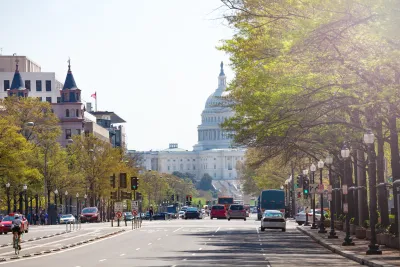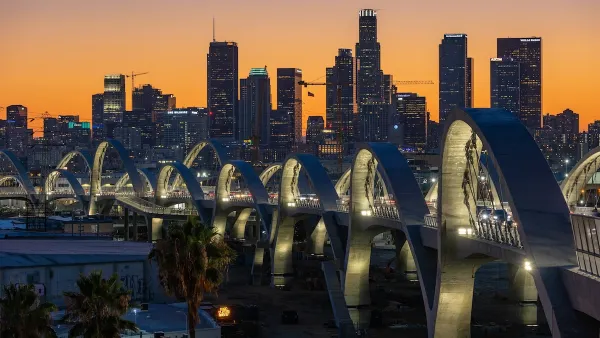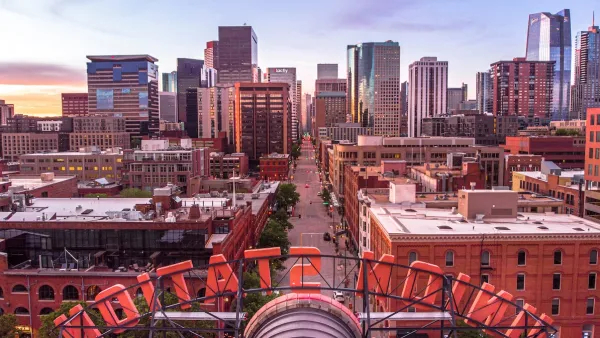To meet its climate goals and revitalize its downtown core, the District must expand its transit and urban amenities to meet the needs of a wider variety of people.

After a disheartening experience at a webinar ostensibly focused on downtown Washington, D.C.’s potential for post-pandemic economic recovery, Caitlin Rogger highlights the need for more multifaceted, multimodal investment in the District in a piece for Greater Greater Washington.
For Rogger, “Downtown recovery will take a lot more than just drivers: a key component is making it easy to get downtown without a car.” But the dismissive attitude of District officials and delayed transit projects signal a lack of willingness to engage with transit users, pedestrians, and cyclists and cater transportation options to their needs.
Moreover, it reflects an overall failure to engage with the needs of parents, elderly people, disabled people, and other groups. “Choices we make now–from employers subsidizing parking but not transit, to building multi-lane roads that are scary to cross for the young, old, and mobility-impaired, to insisting on full-time in-person work only–will determine who participates.”
Rogger points out that key elements of a successful post-pandemic recovery doesn’t necessarily differ much from things that people have advocated for for decades: “things to do, public space, room for sidewalks, bikes, and transit, good air and sound quality, public art–as opposed to space for cars.”
The District already has goals to reduce driving, lower carbon emissions, and encourage more mixed-use neighborhoods, but policy choices have to support those goals. “Workers aren’t the only type of person who can generate valuable activity–even profitable activity,” Rogger writes. Downtowns must be accessible, safe, and attractive for everyone, not just white-collar workers.
FULL STORY: Downtown DC’s recovery hinges on one word

Analysis: Cybertruck Fatality Rate Far Exceeds That of Ford Pinto
The Tesla Cybertruck was recalled seven times last year.

National Parks Layoffs Will Cause Communities to Lose Billions
Thousands of essential park workers were laid off this week, just before the busy spring break season.

Retro-silient?: America’s First “Eco-burb,” The Woodlands Turns 50
A master-planned community north of Houston offers lessons on green infrastructure and resilient design, but falls short of its founder’s lofty affordability and walkability goals.

Test News Post 1
This is a summary

Analysis: Cybertruck Fatality Rate Far Exceeds That of Ford Pinto
The Tesla Cybertruck was recalled seven times last year.

Test News Headline 46
Test for the image on the front page.
Urban Design for Planners 1: Software Tools
This six-course series explores essential urban design concepts using open source software and equips planners with the tools they need to participate fully in the urban design process.
Planning for Universal Design
Learn the tools for implementing Universal Design in planning regulations.
EMC Planning Group, Inc.
Planetizen
Planetizen
Mpact (formerly Rail~Volution)
Great Falls Development Authority, Inc.
HUDs Office of Policy Development and Research
NYU Wagner Graduate School of Public Service




























